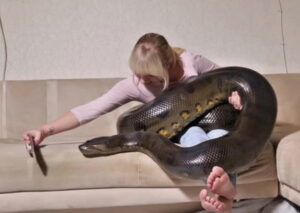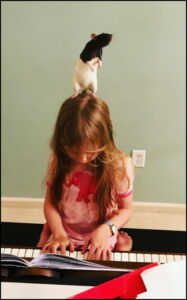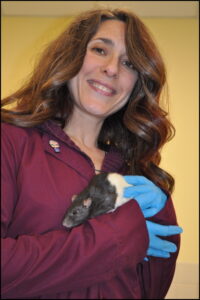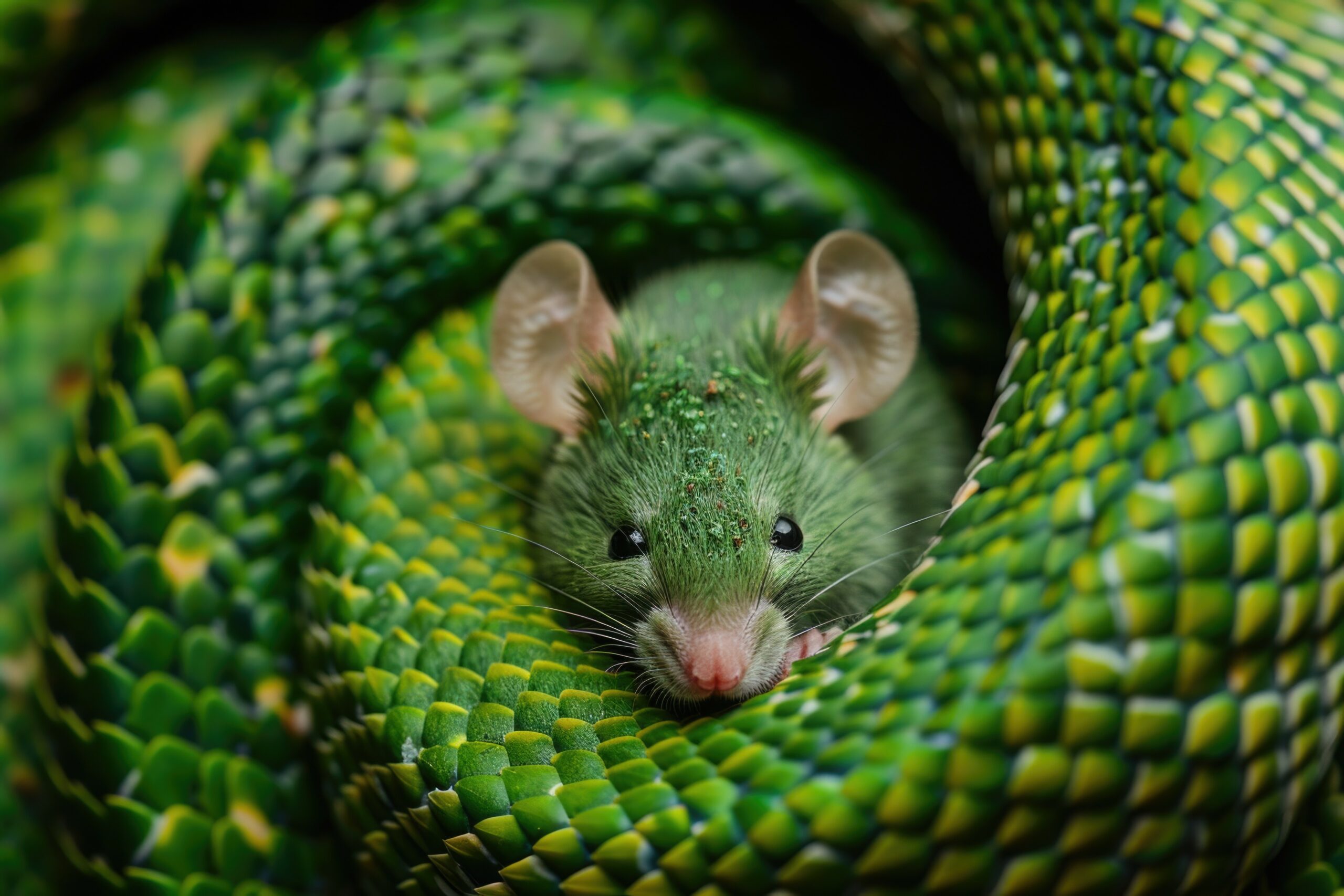
PREVIOUSLY IN THIS SERIES: RE-HOMING #1
Recently I wrote about a long-overdue trend toward finding alternatives to the practice of euthanizing lab animals. To recap, millions of animals (all kinds, the large majority being birds and rodents) are bred each year specifically to be studied in science laboratories. In the modern era of ethical oversight of animal research, the tradition has been to euthanize them when experiments end — even animals that remain healthy and have considerable lifespan remaining. In recent years, however, programs have been popping up to “re-home” some of these animals by adopting them out as pets who will be well cared for.

Animal experiments have been a cornerstone of basic operant research since the beginning, and I have known a lot of animal researchers. Nearly all have disliked euthanizing retired subjects. It’s pretty simple: You develop a relationship with an animal you work with every day, and it’s hard to see a friend meet an untimely death. For this reason I hope to see the re-homing movement gain momentum. Currently, only a tiny percentage of eligible animals get adopted out, in part because this movement is new and in part because in most jurisdictions the required work is left to the discretion of individual researchers and their home institutions. But as illustrated by the Millersville University rat re-homing program featured in Part 1 of this post, the process can be made to work and the results can be heart-warming.
Risks
As much as I’m a fan of re-homing, however, a thoughtful appraisal will acknowledge that it carries risks to both human adopters and animal adoptees.

Regarding risks to adopters, well, some lab animals simply shouldn’t be in human homes. Some pose health risks to humans. Some have dangerous species-typical behaviors, and others are difficult to socialize. Hence, it’s a bad idea to re-home ebola-infected mice, large boa constrictors, or squirrel monkeys (disagreeable beasts that require a different type of retirement). Fortunately, at almost all research institutions, animal experiments are overseen by an ethics board (Animal Care and Use Committee, or ACUC) and lawsuit-shy house attorneys, whose approval would be needed for any initiative to adopt out retired subjects as pets. Animals that pose the most danger to humans would be ruled out.
Also, pleasantly enough, that mainstay of operant research, the lab rat, is easily socialized and not inherently dangerous. As discussed in Part 1 of this post, a lot of people truly dig their adopted lab rats!
Regarding risks to the animals themselves, an ACUC won’t approve the re-homing of animals that are unlikely to thrive in adopter-provided habitats (e.g., they’re quite elderly, they’ve been badly injured by research procedures, or they require special living conditions that ordinary citizens aren’t able to provide).
All in all, what I’m saying is that existing systems for overseeing animal research have a lot to contribute to a heathy re-homing movement.
The Ethics of Re-Homing
In general what we’re discussing here is an ethical calculus that weighs potential benefits of re-homing against potential risks. This is a complicated issue, in part because ethics is a deeply philosophical topic (nothing in philosophy is straightforward!) and in part because many different ethical frameworks can apply to animal welfare and animal research.
I’ll oversimplify by elaborating a bit about benefits and risks.
First, benefits. Part 1 of this post talked a lot about the joy that human adopters often get out of their rat-lab graduates. That’s something we should care about, to be sure, but an ethical analysis of laboratory animals mainly addresses benefits and risks to the animal. Benefits, therefore refer to animal well-being. As Van Loo and Janssens (2023) have written:
It has been argued broadly that animals from many species have a moral status… We focus on vertebrate species, which are all sentient, meaning that animals of these species can experience positive and negative affective states, such as happiness, relief, hunger, thirst, pain and boredom. Additionally, memory, anticipation and the ability to cope with specific circumstances can enhance or diminish negative and positive experiences
The utilitarian case for rehoming all redundant laboratory vertebrates that are healthy and rehomeable is that a life worth living (at least from that moment on) is prolonged, while for the volunteering adopter there is a small burden and a great pleasure…. Killing can be seen as taking away future welfare or future fulfillment of preferences.

In other words, “continuing life has, in itself, a positive value for the animal” and ending that life prematurely by definition causes harm. As an official connected to a New Zealand re-homing program put it, “We do want to make sure that on balance, the life of the animal is going to be improved, and better for them than being euthanised (emphasis added).”
Here it’s important to remember the basis for traditional euthanasia policies: It was assumed that the animal, which was bred specifically for research, either had no purpose outside the lab or could not adapt to an outside environment. The first issue is part of a thorny philosophical debate that, like all philosophical debates, rests on subjective premises, so below I want to focus on that second issue.
Can laboratory animals who have known only the laboratory thrive in the everyday human world? Read Part 1 of this post for assurance that, with the right kind of human host, many can!
Everything depends, however, on the beneficence and wisdom of the human host — as I’ll explain in somewhat horrifying detail shortly. The central question to be answered is not so much what the adopted animal is capable of, but rather what kind of quality of life can be expected from various alternatives to euthanasia, including but not limited to re-homing. Permit me an extended digression to make this point.
An Example: Dr. Alexander’s Terrible, Horrible, No Good, Very Bad Day
One perspective on animal research, endorsed by People for the Ethical Treatment of Animals and some other animal-rights groups, is that the best alternative to lab life is freedom. Captivity of any kind is seen as cruel, and over the years we’ve seen well-publicized episodes in which activists broke into labs, stole the animals, and released them into the wild (here’s a recent example). Keep this in mind while reading the following sad tale, which I’m relating with a smidgen of creative license to protect the anonymity of those involved (deeply ethical and caring individuals all, I assure you). I swear that the gist is 100% true.
 Meet Dr. Alexander (not his real name), a decent and capable investigator who maintained a huge colony of research pigeons. The colony was so big, in fact, that the university balked at paying for its upkeep, and one day an order come from On High that half — some 75 birds! — had to be euthanized.
Meet Dr. Alexander (not his real name), a decent and capable investigator who maintained a huge colony of research pigeons. The colony was so big, in fact, that the university balked at paying for its upkeep, and one day an order come from On High that half — some 75 birds! — had to be euthanized.
Dr. Alexander was understandably upset. Research pigeons can live 10 to 15 years, during which they can be part of multiple experiments and considerable bird-human shared behavioral history. Pigeons also have individual personalities, and Dr. Alexander knew every one of his birds so well that he mourned deeply any time one of them finally flitted off to that Aviary in the Sky. He simply couldn’t image executing 75 of them, so when the university’s euthanasia edict came down he resolved not to take it lying down.
At first that meant lobbying the university to keep the birds, but when that fell on deaf ears, Dr. Alexander turned to the state’s Department of Natural Resources for an alternative. If he couldn’t keep the birds, why not release them into the wild, where they would enjoy lives of freedom and leisure? A six-month letter-writing campaign ensued. The Department of Natural Resources at first ignored this, but over time Dr. Alexander wore them down. Eventually they relented and granted permission for a strategic release.
And so it was that, on a spectacular fall morning, Dr Alexander and his graduate students carefully transferred 75 pigeons from their home cages in the vivarium to big cardboard boxes in the back of his old minivan. They drove out to a state park rimming a river gorge, and found an escarpment overlooking the deep valley below. One by one they removed each pigeon from its box, and, with a tearful goodbye and a loving nudge, launched it into flight.
I’m told that this was a glorious sight — imagine a snow white bird soaring across the crystal blue sky above hillsides of chalky limestone and colorful fall leaves. Now imagine that multiplied by 10, by 30, by 75 birds… an entire sky full of pristine pigeons on the wing for the very first time in their sheltered lives. And now imagine that same scene with birds who, by virtue of their caged existences, had never developed distance vision. The results, in hindsight, might have been anticipated, but you know the old expression about good intentions….
One bird flew halfway across the gorge before reversing course and slamming head first at full speed into the cliff face. Many others careened into trees and power lines and one another. One, I’m told, flapped frantically in several random directions before apparently giving up and, like some cartoon character (below), helplessly plummeting to the valley floor.
Within a short interval the flock was reduced by about half, but the carnage didn’t end there.

Over the next few days local police and animal control officials received numerous calls from county residents about peculiar white birds, wearing leg bands, who had succumbed to hypothermia, or been gored by cats they didn’t know to avoid, or starved to death when the steady supply of yummy mixed grain they’d depended on in the lab didn’t magically materialize.
It seems unlikely that any of Dr. Alexander’s poor pigeon pals survived even a week of liberty, though there were unconfirmed reports to the contrary. In a possible instance of unanticipated homing abilities, one student claimed he’d seen a white pigeon atop the eaves of the Psychology building. [Another swore — and I am not making this up — that he saw one in town, perched on a stoplight, pecking furiously at the changing disks of colored lights. Presumably frustrated that no mixed grain was forthcoming.]
Anyway, I hope you get the idea: “Freedom” sounds quite appealing in the abstract, but the devil is in the details.
Owner Accountability
And so it is for re-homing. If you read Part 1 of this post you’ll notice that all of the formal precautions taken to assure quality of life for retired lab animals land are prospective.

Prior to adoption, applicants fill out questionnaires and are interviewed. At Millersville, Kelly Banna goes the extra mile and asks for a recommendation from each applicant’s veterinarian. This is great, but in the end, do programs know what becomes of animals after they are placed? The reality is that in most places few, if any resources, are allocated to support re-homing, making systematic followup all but impossible.
Uncertainty on this point reminds me of the time my wife and I served as foster parents. To earn this privilege, we had to complete exacting home visits and a 12-week training course on child development, trauma, behavior management, and state regulations governing child care and foster children. All well and good, but once a child was placed with us there was close to zero follow through (the Illinois child welfare system is stretched so thin that there aren’t enough staff to give each case careful attention). As a result, no one verified that we fed and clothed the child properly, followed through with physician and therapy appointments, or employed constructive parenting practices. For long stretches, no one even checked to see if the child was still in our home. With such sketchy accountability, it may be no surprise that a sizable minority of foster children report experiencing abuse or neglect, and state foster care systems completely lose track of the whereabouts of tons of kids every year.
Without post-adoption follow through, it’s conceivable that retired laboratory animals could end up in similar dire circumstances This is a bit more than conjecture. When I was an undergraduate, I knew or heard about students who:
- Adopted a lab rat to feed it to a pet boa constrictor.
- Allowed an adopted rat to escape. It took up residence in the apartment building walls, where it was at risk for disease and predation.
- Left an adopted rat unattended during a holiday break. It starved.

To be sure, this was in the pre-ACUC Wild West days of adoptions, when some labs handed out rats like Halloween candy. Whether any of these adopters could have passed modern pre-adoption screenings I don’t know. I’m pretty sure that in two of these cases the adopting student had good intentions and would have declared a sincere commitment to provide proper care. But with say-do correspondence being contingency-driven, promises don’t always bear out, making it possible to transfer lab animals to environments that are less suitable than they may first appear.
I asked Millersville’s Kelly Banna whether she worries about follow-through from adoptive families , and she said, “Sure. I have worries about the fate of everything humans lay hands on. Have you read the news from any time point in human history?” Touché.
A Good-Enough Protocol (?)
At this juncture I’m inclined to trot out Ronald Reagan’s old saw about the need to, “Trust, but verify” …in this case, to supplement pre-adoption screenings with monitoring of what happens after. But the truth is that, in the present resource environment, requiring something like post-adoption home visits to certify ongoing animal well-being would grind the re-homing movement to a halt. As I mentioned in Part 1, in the U.S., the National Institutes of Health endorses the concept of re-homing but forbids using federal funds to support it. Rarely are staff and dollars allocated to re-homing projects, meaning that people like Kelly Banna do it strictly as a labor of love. Under these conditions, re-homers are doing the best they can with pre-adoption screenings.
Yet it’s still worth asking: Within context of that ethical calculus mentioned above, is this good enough?
The only answer I can propose is stochastic. As Part 1 of this post documented, re-homers like Kelly choose the most promising adopters they can find. Kelly has adopted out to veterinarians, people working in animal care, people with a long history of having pet rats, and students who demonstrated good “parenting” practices in her lab class. If the best predictor of future behavior is past behavior, these folks are as close to a sure bet as you’ll find. Moreover, re-homers hear from a lot of their adoptive families, who send pictures and videos and stories documenting that, as Kelly put it, “the rats are living their BEST lives in retirement.” In actuarial terms, this leaves a small proportion of rats and adopters for whom outcomes are unknown. If, based on prospective measures and spontaneous communication, we can be sure that, say, 90% of re-homed animals are well treated, is that enough to justify the risk of what could happen to the other 10%?
 That’s an entirely subjective question. Personally, with euthanasia as the alternative, I’ll take that roll of the dice, but of course I’m neither a laboratory animal nor an animal ethicist. Intelligent people may disagree, and I’m sure this is something that animal welfare advocates will continue to discuss.
That’s an entirely subjective question. Personally, with euthanasia as the alternative, I’ll take that roll of the dice, but of course I’m neither a laboratory animal nor an animal ethicist. Intelligent people may disagree, and I’m sure this is something that animal welfare advocates will continue to discuss.
In the meantime, the re-homing movement is growing. See Part 1 of this posts for a few tips on how to start your own re-homing project. Just please screen your adopters carefully.
